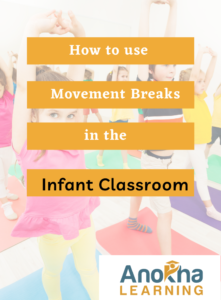
Why are movement breaks important?
Starting school, learning to focus, being cooped up indoors on rainy days, these are all difficult for young children. Little hands and feet yearn to move. Structured or spontaneous breaks woven into your daily routine create opportunities for fun and engagement. If the children are yawning or fidgeting it's definitely a sign that they are craving a break! If you are working at the senior end of the school right now, don’t worry, we’ve got you covered - our post on movement breaks for older children is coming soon! Keep reading because we will also share useful websites with suitable resources for a range of age groups at the end of this blog post.
At infant level, movement breaks can foster class cohesion and a sense of belonging. They can help young children to feel safe and to settle into the school environment. Young children crave routine and predictability. They also learn best through repetition. Movement breaks can provide an informal way to reinforce concepts such as positional language (right, left). Movement can also help the children to refine their fine and gross motor skills.
In this blog post, we’ll explore some tips to help you to integrate movement breaks throughout your daily routine.
Before you start
Infants will need a teaching input on safety rules to ensure that the movement break goes smoothly. It can be a good idea to create a visual anchor chart recapping the rules. Or you might take a photo of the class adhering to the safety points and refer to it regularly. It’s also important to “catch them being good” and to use positive reinforcement. Some simple rules you might like to focus on include tucking chairs, bags etc. out of the way and ensuring that everyone has enough space to move without encroaching on others. Practice the rules regularly. You will find that over time the disruption caused by pushing in chairs, moving bags, lining up etc. will be reduced.
Timetable the breaks
Children in the infant classes respond well to structure and routine. Display the movement breaks on the whole class visual schedule. This can be paper based or on the Interactive whiteboard. Sometimes the promise of an upcoming break can help younger children to focus on the current task.
Think about times that naturally lend themselves to a quick movement break. For example in the morning, during transitions and after lunch to beat the afternoon slump!
Tip: You could add “helper” to the class jobs board. Inform the child who is assigned the role to remind you when it’s time to take a movement break, that way you won’t forget!
Practice regularly
Here are some suggestions of movement break activities that you may like to try with your class:
Quick indoor movement break activities for the Infant classroom
- Play “Simon Says”/Deir O Grádaigh and incorporate lots of actions
- Perform action songs, chants and rhymes with gusto
E.g. Head, Shoulders, Knees and Toes, The Grand Old Duke of York, etc. - Practice letter and number formation by tracing them in the air using body parts - fingers, noses, knees, elbows, toes
- Do a quick set of on the spot jumping jacks, jogging, star jumps, chair dips, etc.
- Perform animal stretches/yoga poses
- Try out the brain break songs from the Learning Station to “shake the sillies out”
Take a mindful walk around the school, engaging the five senses. You may like to focus on a specific sense, e.g. a sound walk (this one is from the PDST) taking into consideration the specific children in your class - Incorporate movement into counting games, e.g. hopping as they count, clapping while counting
- Explore ideas from Math4Love for further inspiration to incorporate movement into your numeracy lessons
Outdoor movement break activities
- Run/hop/skip/jump around the perimeter of the yard
- Blow and burst bubbles
- Play hopscotch
- Have a go at letter and number formation using chalk
- Create a class activity bag containing resources such as skipping ropes, hula hoops, ribbons, a parachute, velcro bats and balls, cups, cones
- Play "Follow the Leader"
- Explore a movement trail in the school grounds
Resources and websites to support your movement breaks
Go Noodle
Go Noodle has a search function enabling you to select the category and length of movement break required. You can also filter by energy level.
Cosmic Kids Yoga
Cosmic Kids Yoga is really popular with our course participants. Filter the suggested videos by length, energy and category required.
Bizzy Breaks
The Irish Heart Foundation have a set of bizzy breaks designed to get children moving on the spot. They also have resources for rainy days. Contact the Irish Heart Foundation for more information on how to purchase these resources.
Elsa Support
The Elsa support website features a huge range of free and paid resources to support you in teaching Emotional Literacy. Print their Mindfulness Rainbow Walk resource and encourage the children to notice and record the colours they spot on a mindful walk of the school grounds. Repeat the exercise periodically and record seasonal changes.
Sound Walk resource
This link features a guided sound walk with suggested science concepts and vocabulary related to sound, question prompts and a plenary.
We hope you enjoy exploring the activities and resources featured in this post and we’d love to hear how you got on!
